My 10 favorite islands in the world: Your dream list for the post-pandemic 2021
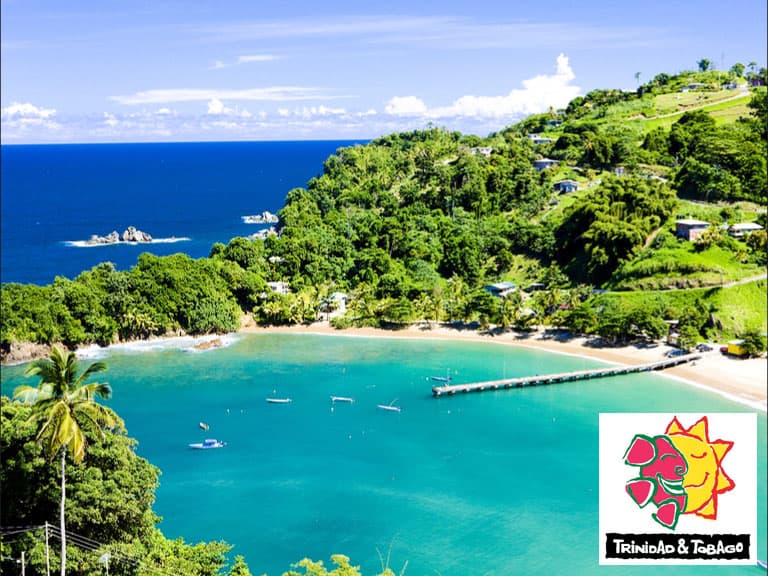
Let’s face it, folks. It’s time to punt 2020. You’re not going anywhere. Americans have been banned everywhere from Poland to Pluto and even here in Italy our curve has spiked a bit after a flatlining summer brimming with optimism.
It’s time to plan for 2021. Well, at least dream. That’s all many of us have done this year. We’ve sat in our homes, stalking like caged tour guides, and looked out the window at beautiful weather and a world beyond we can not touch.
After the worst year of most of our lives, there’s one place that would bring us back to life. It’s the perfect elixir for a sedentary year filled with fear, anger, frustration and way too much processed food.
An island.
Sit on a beach with a glass of the local poison, stare at a sunset that you know really will come back up the next morning. In the 107 countries I’ve visited, I’ve been to even more islands. Scuba diving has taken me to the far, wettest corners of the earth. But you don’t need to be certified to enjoy these little lumps of sand.
I’ve already written plenty about Procida, my favorite island in Italy. Here are my other 10 favorite islands in the world, in order. Keep them in mind when — or if — the Covid-19 blockades lift. I’ve included the year I visited each and added updates where applicable. Also, I link travel stories or blogs if I’ve done them.
Happy sails:

Tobago, Trinidad and Tobago, 1999
This is the perfect combination of isolation, beaches, rain forest, environment, culture and friendliness. Walt Disney was impressed enough to film “Swiss Family Robinson” there in 1958. It hasn’t changed a lot since then. Located 40 miles northeast of Venezuela, it’s just 12 miles north of sister island Trinidad but seemingly light years from Trinidad’s Carnival-laced tourism and danger. Tobago has fought hard to keep its small-island atmosphere. Local owners have turned down millions from big hotel corporations.  Hilton arrived in 2000 but it remains the lone five-star hotel on the island. Instead, the isolated beaches are lined with boutique hotels and comfy four-star properties such as my Blue Waters Inn in Speyside on the even more isolated east end. Tobago is only 26 miles long and seven miles wide yet has world-class scuba diving, including one of the world’s largest brain corals, and the 14,000-square-acre Main Ridge Forest Reserve, established in 1776 and the oldest protected rainforest in the Western Hemisphere. Rent a car for a day and cruise Bloody Bay, Parlatuvier Bay, Englishman’s Bay and Castara Bay, four of the prettiest beaches in the Caribbean and located only about 15 minutes apart. Find a beach chair, discover the local Old Oak white rum and get into liming, the Tobagoan term for just hanging out. A sea and sunset are never too far away.
Hilton arrived in 2000 but it remains the lone five-star hotel on the island. Instead, the isolated beaches are lined with boutique hotels and comfy four-star properties such as my Blue Waters Inn in Speyside on the even more isolated east end. Tobago is only 26 miles long and seven miles wide yet has world-class scuba diving, including one of the world’s largest brain corals, and the 14,000-square-acre Main Ridge Forest Reserve, established in 1776 and the oldest protected rainforest in the Western Hemisphere. Rent a car for a day and cruise Bloody Bay, Parlatuvier Bay, Englishman’s Bay and Castara Bay, four of the prettiest beaches in the Caribbean and located only about 15 minutes apart. Find a beach chair, discover the local Old Oak white rum and get into liming, the Tobagoan term for just hanging out. A sea and sunset are never too far away.
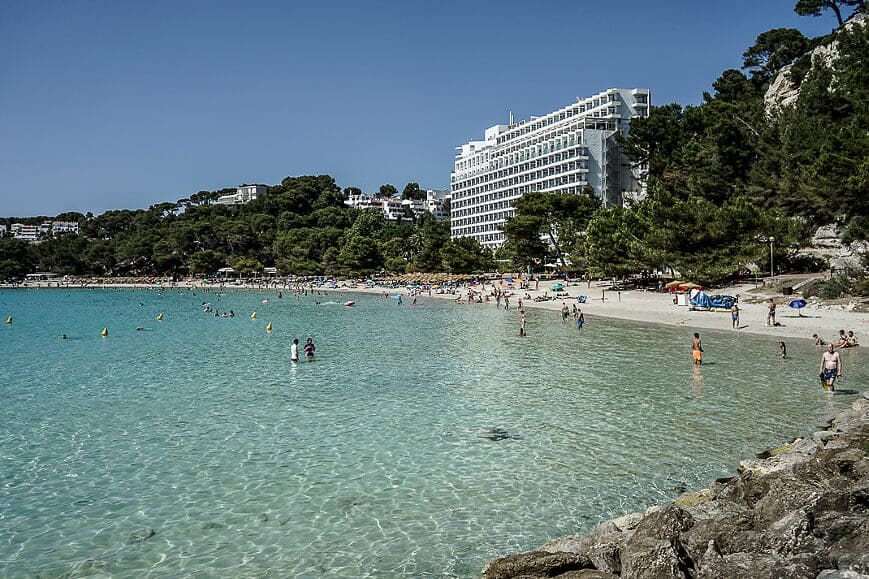
Menorca, Spain, 2019
I’ve always wanted to live on an island. Menorca is battling Procida as a future part-time home for Marina and me. It has been a UNESCO biosphere reserve since 1993. Only 270 square miles, you can drive across it in 45 minutes or you can walk along the 115-mile Cami de Cavalls (Bridal Path) that goes along the beach. Menorca is to Mallorca what Tobago is to Trinidad. While Mallorca has as many clubs and drunks as lanais chairs, Menorca 80 miles to the northeast is quiet and laid back with fantastic, white-sand beaches.

Check out the small, secluded Cale Mitjana or, our favorite, Cala Santa Galdana, a one-kilometer gently bending stretch of sand where every lanais chair has a thatched umbrella. The best beach on the island is Cala en Turqaeta but the parking lot gets full by 10 a.m. Menorca is more family oriented. Our nightlife consisted of sipping local wine in bars in the town of San Lluis where they close traffic along the main drag on weekends. You must rent a car. Public transport is spotty. But everything is close and Ciutadella, the island’s largest town with 29,000 people, is a pleasant, tree-lined seaside town with plazas sporting outdoor cafes. Sailboats take visitors for late afternoon cruises and get you back in time for Spain’s terrific cuisine of tapas, paella and fresh fish.
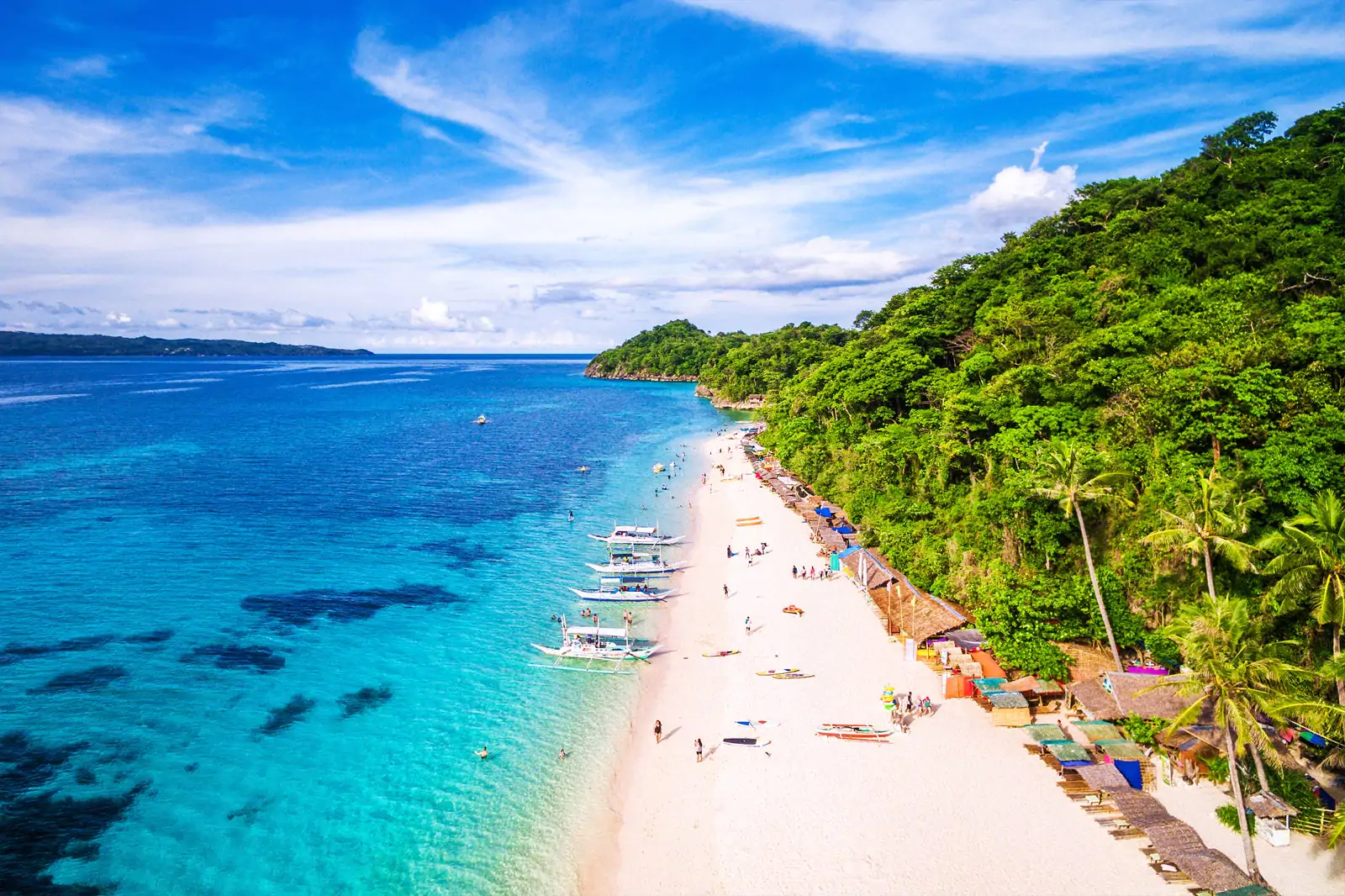
Boracay, Philippines, 2000
This is not a well-kept secret. It’s on Planet Earth’s Island Hall of Fame. In the late ‘90s, Islands magazine ranked Boracay’s famed Five Mile White Sand Beach as the best in the world. In 2012 Travel + Leisure magazine named it the Best Island in the World. In 2014 Conde Nast magazine listed it among its Best Islands in the World and in 2016 it topped Conde Nast’s list of Top 10 Destinations in the World. The main attraction is the Five Mile Beach that runs the entire length of the island. It is lined with white sand that workers sweep of pebbles every morning and palm trees that stretch the entire five miles.
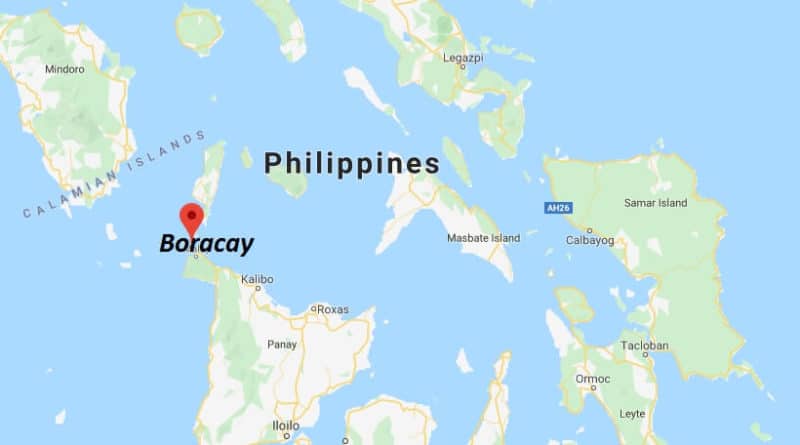
With the turquoise water, Boracay from the air looks like a blue water color inside a white and green frame. It has some of the most exotic scuba diving of my life, including an underwater volcano where you hang on the rim and watch sharks fly out of the bottom like popcorn out of a popper. Reefs sit just 100 meters offshore where snorkelers can see hundreds of varieties of exotic fish. Only an hour flight from Manila, you can get away from it all here but at night you’ll likely jump in head first into one of the biggest party scenes in East Asia. The beach is lined with beach bars, all selling Tanduay rum that’s cheaper than fruit juice and where pretty, young Filipinas flirt with Westerners. But be careful of your libido. Many of the Filipinas are Filipinos.
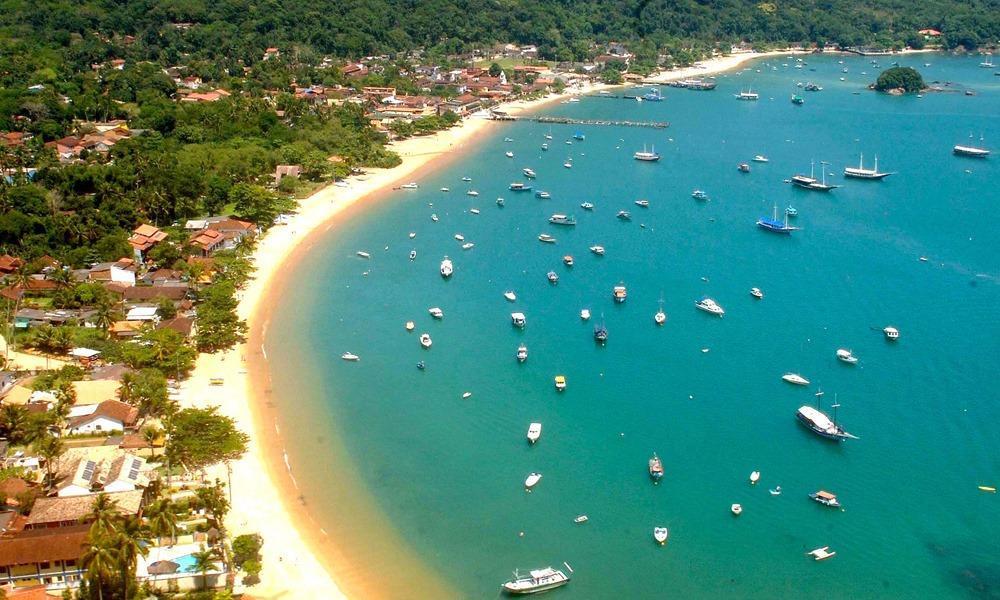
Ilha Grande, Brazil, 1997
It has no roads and does not allow motorized vehicles or buildings more than two stories. Yet it does have 106 fantastic white-sand beaches and more than 40 quaint inns, a little-developed tropical paradise that mass tourism hasn’t spoiled. It turns out, having one of Brazil’s most ferocious prisons scares off folks who don’t want to get that close to the locals. When the Candido Mendes prison closed in 1984, the government hoped this island of 15,000 people would boom. It hasn’t. Good.

Every beach seems to have its own individual cove isolated by inlets and jagged stretches of forest, all of which can be reached via the 93 miles of hiking trails. Ilha Grande was a stronghold for pirates who used the isolated coves to hide their booty. Thus, the island has a pirate theme with names such as Piratas Bar & Creperia and Canto Pirata. While it hasn’t attracted big hotels or cruise ships, it did earn UNESCO World Heritage Site status in 2019. What also keeps down the crowds is it isn’t each to reach. I took a 2 ½-hour bus ride from Rio de Janeiro south to Angra dos Reis where I hopped on a small boat for about 75 minutes to the island’s dock — in the middle of a long stretch of sandy beach. Also, bring cash. It has few ATMs and many run out of money.
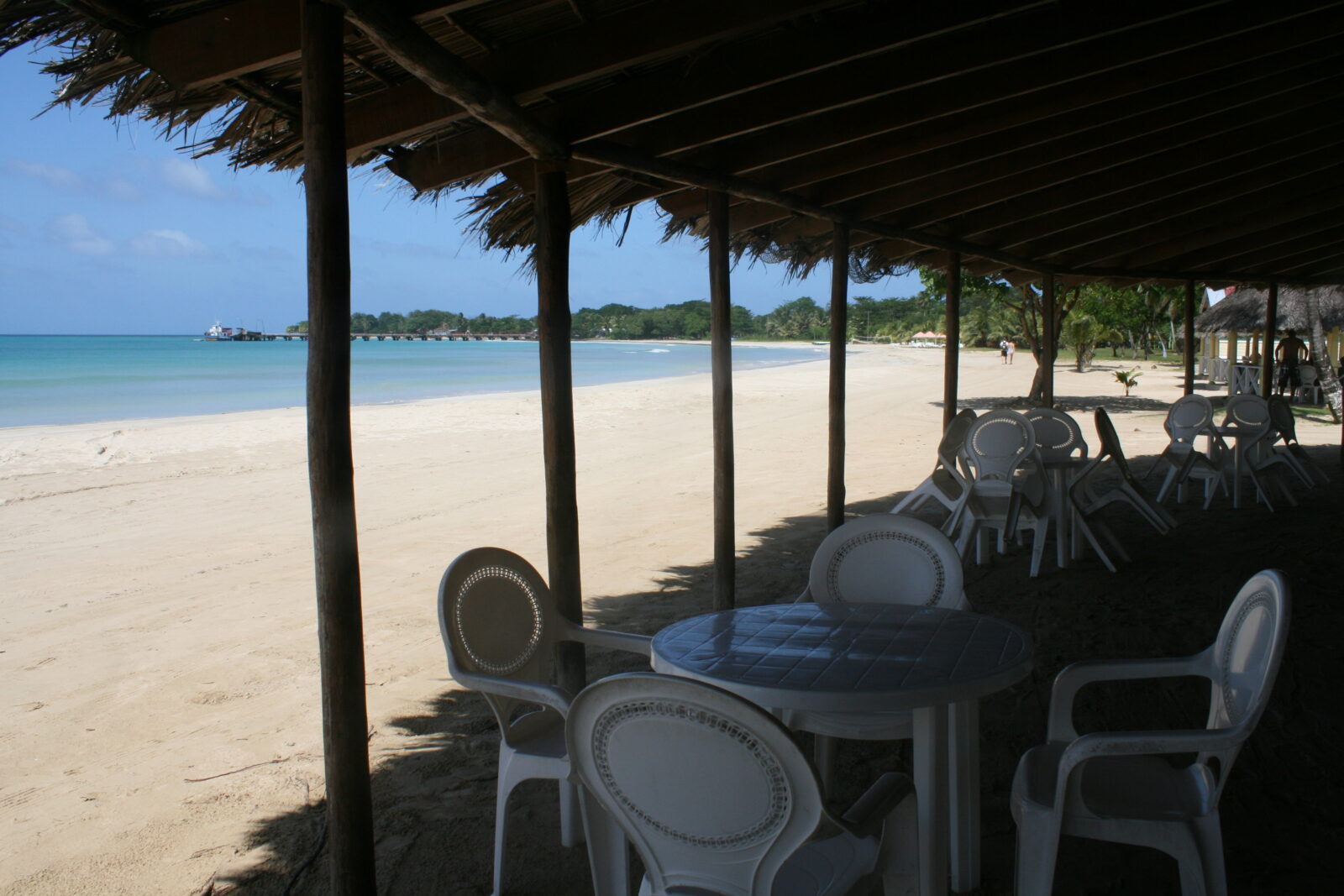
Little Corn Island, Nicaragua, 2012
The world is running out of backpacker islands where huts on the beach are the de rigeur instead of corporate resorts. Little Corn Island is one of them. On the Caribbean side of Nicaragua 40 miles from shore and a 75-minute flight from the capital of Managua, Little Corn Island has no cars, no roads and exactly one resort. It doesn’t even have police. If someone commits a crime on this island of 1,200 people, they’re just put on a boat and sent back to the mainland. I had a simple but comfortable hut on a stretch of white sand beach for $25 a night and walked to the reggae and rum bars scattered along the half-square-mile island. You can walk around it in an hour, advisable on the first day to scout out the best secluded beaches. You can even sneak onto the beach at Yemaya Island Hideaway, the island’s lone five-star resort.

Little Corn Island is worlds away from the violence of Managua. In fact, the locals don’t call themselves Nicaraguans. They call themselves Caribbeans. English is their first language. British pirates controlled the island in the 1700s and when Britain left in 1786 they returned in 1841 after Nicaragua gained independence from Spain. Fishing, not piracy or even tourism, is the main industry. Scuba diving and snorkeling are fabulous with sharks, barracuda and stingrays among the regular sightings. But bring snacks and cash. I’ve read supplies remain short and the island still has no ATM. Credit cards? Ha! You can take the 8-mile boat road to Big Corn Island (2.3 square miles) where you’ll find ATMs.

Isla Holbox, Mexico, 2013
If you’re tired of the giant frat party that is Cancun, step out of the vomit-filled gutters and get to this idyllic island 60 miles north up the Yucatan Peninsula. No cars are allowed. (See a pattern of my tastes yet?) The main mode of transport is golf cart, including taxis which whisked me from the harbor after a 30-minute ferry ride from the little port town of Chiquila. From the air Isla Holbox looks more like a sand-covered pool cue than an island. It’s 26 miles long and one mile wide.
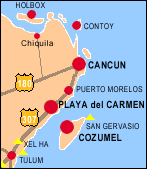
My Hotel Villas Delfines on the beach had a hammock on a wide veranda, hot water pouring out of conch shells in the shower and an environmentally conscious, Mayan-inspired toilet. The beach is long and wide and white, nary a pebble to be found. The island also sits in the middle of the Yum Balam reserve which features 150 species of birds, including brown pelicans and herons which can be seen in huge flocks on short boat rides from shore. The main village has a Spanish colonial plaza lined with outdoor restaurants dishing up fresh seafood and guacamole made at your table. It’s only crowded in July when tourists pour in to swim with whale sharks which come to feed on summer plankton.
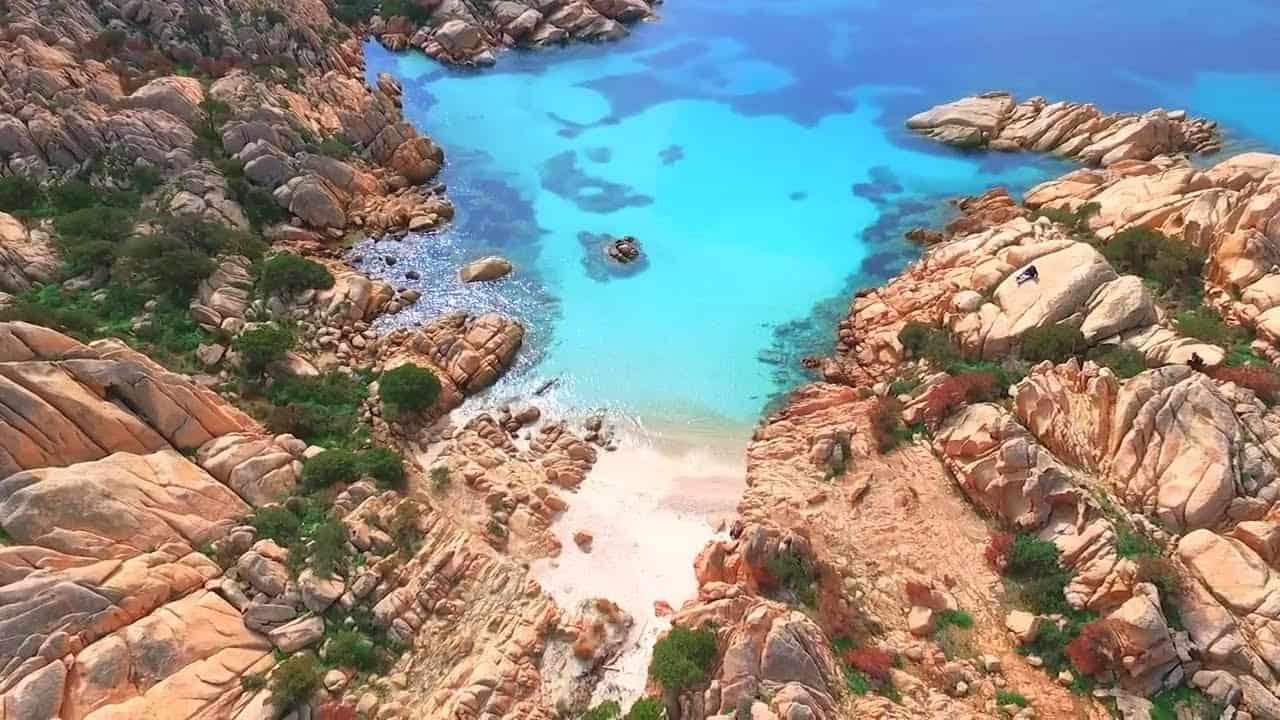
La Maddalena, Italy, 2002
Every August Italians flock to Costa Smeralda, THE place to see and be seen in Italy. But just off Sardinia’s northeast coast where Smeralda drops the anchors of its priceless yachts and stilettos is a series of islands carved by nature instead of euros. The archipelago’s main island is only a 20-minute ferry ride from the port town of Palau. Drive around the eight-square-mile island and marvel and the spectacular vistas of the Tyrrhenian Sea and sandy beaches below.
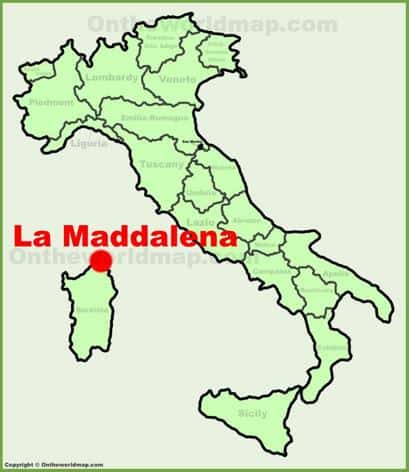
Centuries of the maestrale, the area’s northwesterly winds, have carved the coastline into curiously beautiful but odd cliff formations. Stand atop a cliff and look down at a sea so clear you can see the sandy bottom 50 feet below. Then find a trail and take your beach towel, lotion and book to a plot of sand. It’s not very crowded. The U.S., which opened a nuclear submarine repair shop on the nearby island of Santa Maria in 1972, maintains a naval base there. But the sailors and locals get along. They all sit together in cobblestone piazzas in the middle of orange-colored buildings and eat great food. Of course the food is great. It’s Italy.

Bora Bora, French Polynesia, 1995
This is simply the most romantic spot on Earth. A 12-square-mile island surrounded by a lagoon and a barrier reef. Two forest-covered peaks from an extinct volcano loom over sugary-sand beaches with torches lit at night and Polynesian music drifting over the waves. Don’t go alone. You’ll kill yourself from loneliness within 24 hours. Bora Bora makes the list also for having the most beautiful water in the world. It’s the turquoise of an Italian sky with water so clear you have nearly 300 feet visibility, perfect for some of the best scuba diving in the world. If you have a fear of sharks, do NOT do the organized shark feed. Instead, head to Matira Beach, a shallow, isolated beach lined with palm trees.
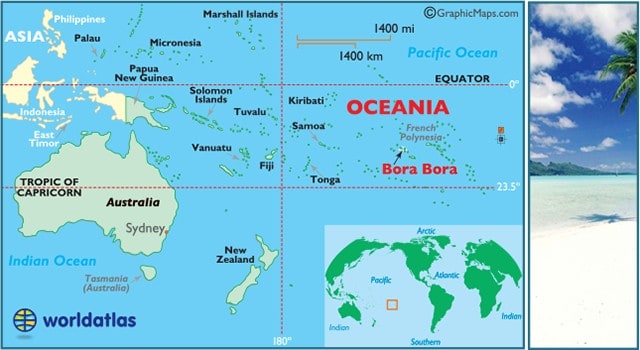
Bora Bora is never crowded. It’s too expensive. It became famous in 1970 when Hotel Bora Bora built over-the-water bungalows. Today, other hotel chains have followed suit but they start at about 500 euros a night. I crewed on a friend’s sailboat for what averaged to about $100 a night. The island itself has little to offer but the two peaks have hiking trails to spectacular vistas. Also, French Polynesia is an island collectivity of France, meaning you have great French food. The island has no public transportation. No worries. It’s very small and Polynesians picked me up hitchhiking wherever I wanted to go.
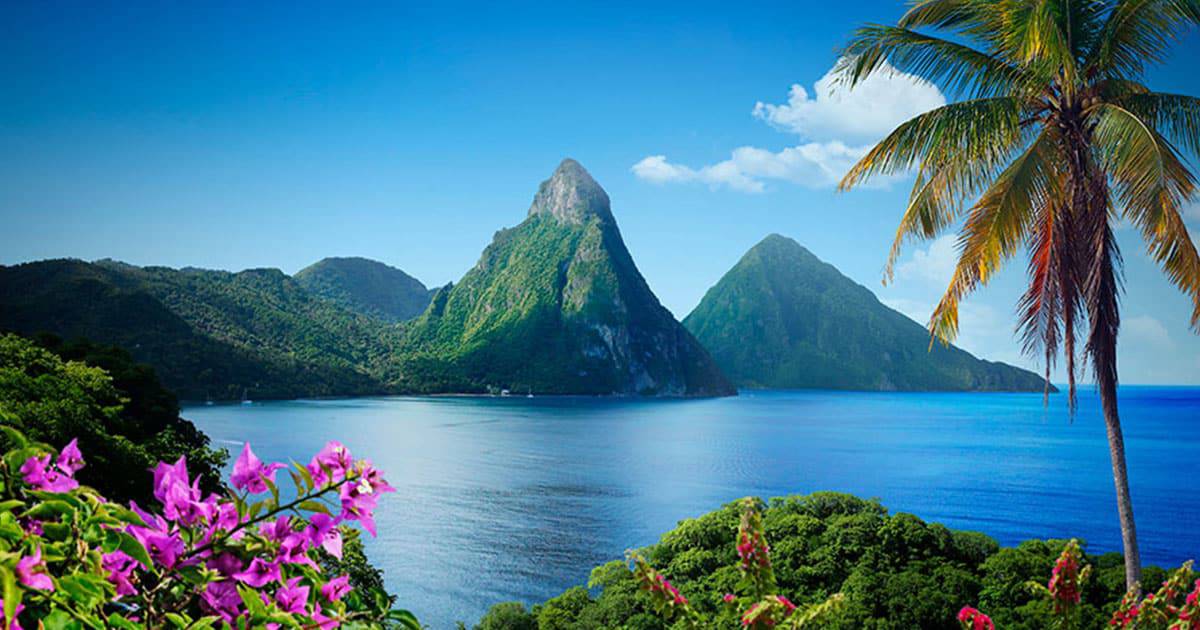
St. Lucia, 2007
I miss the Caribbean. It’s my favorite region in the world, with every island having its own characteristic, geography, language and culture. St. Lucia, located between Barbados and Martinique, makes the list for having a little bit of everything. White-sand beaches. Great nightlife. Excellent beach bars. Beautiful scuba diving. Interesting landscape. Friendly people. Its landmarks are the Pitons, two rocky, triangular peaks that stick out of the Caribbean Sea like two fingers forming the “Victory” sign.
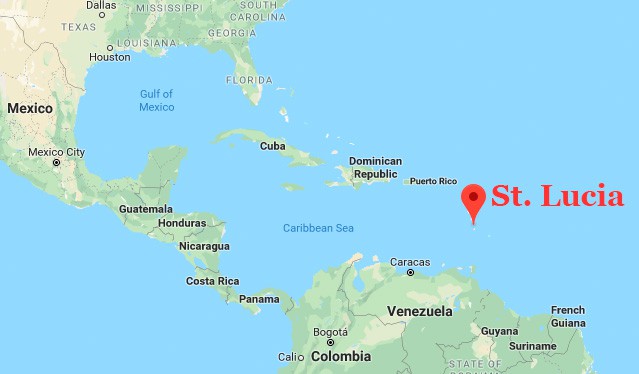
Forest covers 77 percent of the land which provides excellent hiking and views from the hilly terrain. This island nation also sports one of the world’s top mountain biking trails, designed by world champion Tinker Juarez. I stayed in Rodney Bay Village, a collection of reasonably priced resorts on the north end of the 238-square-mile island and about six miles from the capital of Castries. A beautiful, long, white-sand beach is on the other side of laid-back beach bars and cheap restaurants with some of the best dining views in the Caribbean. And don’t miss Fish Friday where a street in the village of Anse-la-Raye closes off to traffic and about two dozen vendors set up shop and fry fish you may have dove past earlier in the day. I ate fresh fish all night for about $12.
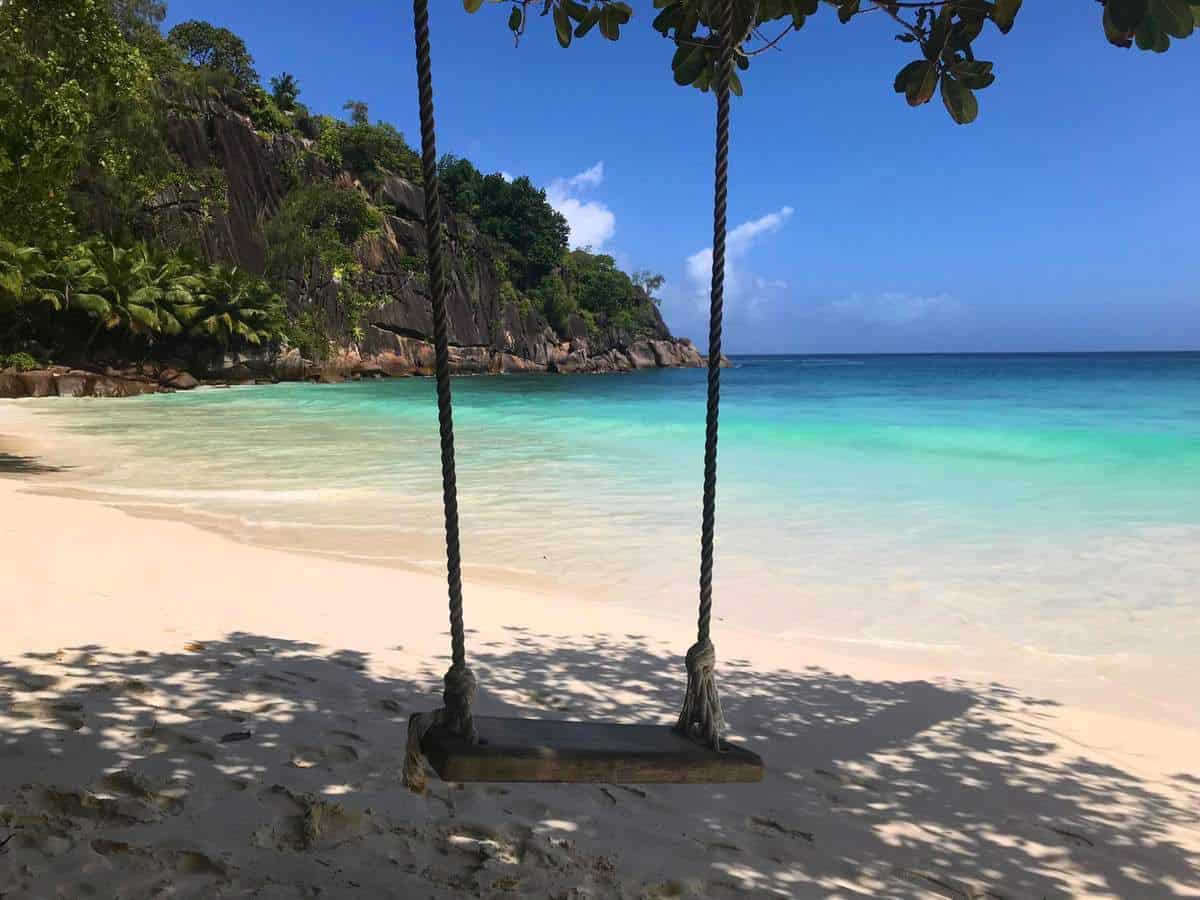
Mahe, Seychelles Islands, 1992
I sat in a small bar next to the prettiest beach I’d ever seen: a perfect half-moon bay of sugary white sand, completely rimmed by a string of palm trees, blocking out the adjacent road. I asked the local sitting next to me, a chef, why it was deserted. “It’s a lousy beach,” he said. “Huh?” I said. “That’s the most beautiful beach I’ve ever seen!” He said, “You should see the outer islands.” I never made it to any of Seychelles’ other 154 islands. But I know they’re so beautiful that Adam and Eve’s Garden of Eden is based on one of them.
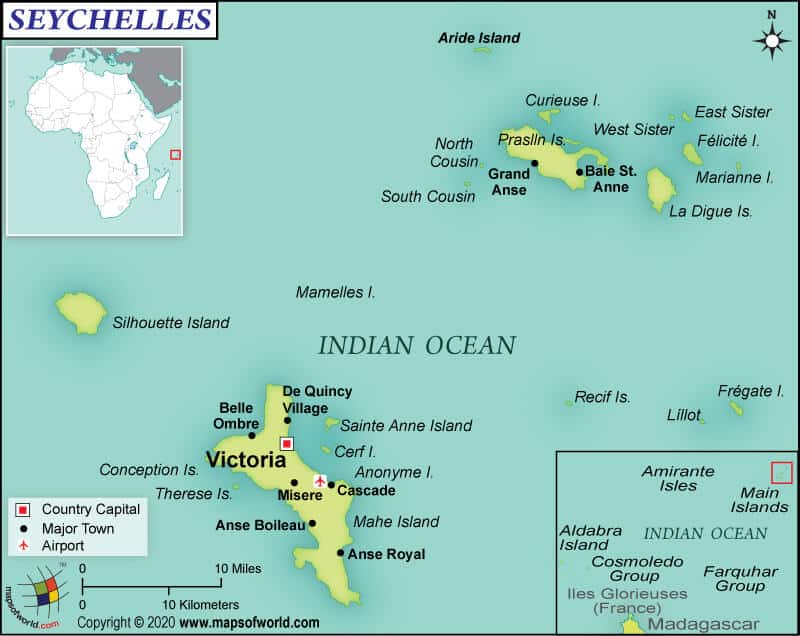
Mahe is the main island with the capital of Victoria but Seychelles’ location 1,000 miles off the east coast of Kenya makes it hard to reach and rarely crowded. It’s a great place to get away from it all and say you were in a real paradise. I’d place this higher but this country with the highest-per capita gross domestic product in Africa belies the mass discrepancy of wealth. Watch out for scammers. Also, don’t go on long sail trips. The Seychelles are on the east end of the Somali Sea and piracy is a problem. Seychelles’ fishing industry lost a reported 46 percent of its income from 2008-09

